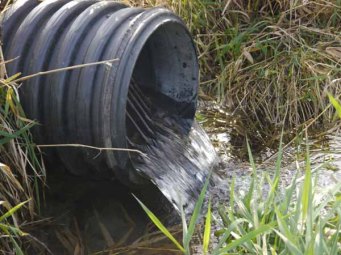Thursday, May 31, 2018
We celebrated American Wetlands Month this May! Extremely productive ecosystems, wetlands can be found in all extremes, from the tropics to the tundra, on every continent except for Antarctica. A little closer to home, Michigan wetlands provide important habitat to many species of waterfowl and fish, which play a vital role in our recreation and tourism industry, as well as our economy.
A wetland is an area where water covers the soil and is present all year or for varying, yet predictable periods of time. Wetlands form for a variety of reasons, whether from a permanent body of water, precipitation, or seasonally from rain or snow. This soil, described as hydric from its saturated quality, becomes anaerobic, or without oxygen. Therefore, the bacteria that reside there cannot use oxygen to respire, and use carbon or nitrogen, giving wetlands a high concentration of these particular molecules to create a unique ecosystem.

Sandhill Crane. Photo: Steven Kahl.
This hydrology, the water saturation of the soil, of wetlands is a major factor in determining the type of soil that develops and the organisms that the environment can support. Since wetlands are versatile ecosystems, many types of both terrestrial and aquatic organisms can live there. In Michigan wetlands, you are likely to see a landscape covered in various sedges and rushes, and in the spring little mallard broods, perched Bobolinks, as well as a booming population of sandhill cranes!
These waterfowl, among many others, find sanctuary in wetlands, as they provide habitat and food for each year’s new brood of ducklings as well as a “rest stop” for migratory birds. About one-third of the United State’s endangered species call wetlands their home, from the American crocodile to many types of orchids! Wetlands also serve an important ecological purpose, such as acting as a buffer to prevent pollution from entering the water system, stopping widespread flooding and holding those excessive flood waters, and controlling erosion along our beautiful Michigan shoreline.

Wetland tiling. Photo: Matt Miller.
Unfortunately, wetlands are becoming increasingly rare due to human actions. Between filling and draining to make room for land for agriculture or development, building dams or dikes, and excessive logging, these detrimental actions have given rise to programs to restore these endangered ecosystems.
Michigan is one of only two states to have a federal wetlands program and is working toward continual restoration of these lands. Methods involve preventing the aforementioned human actions as well as taking measures to remove the tiling that drains water. This special attention from MNA, MDNR, DEQ, and other conservation groups will help guarantee that we can continue to enjoy the beauty and habitat our important wetlands provide!
